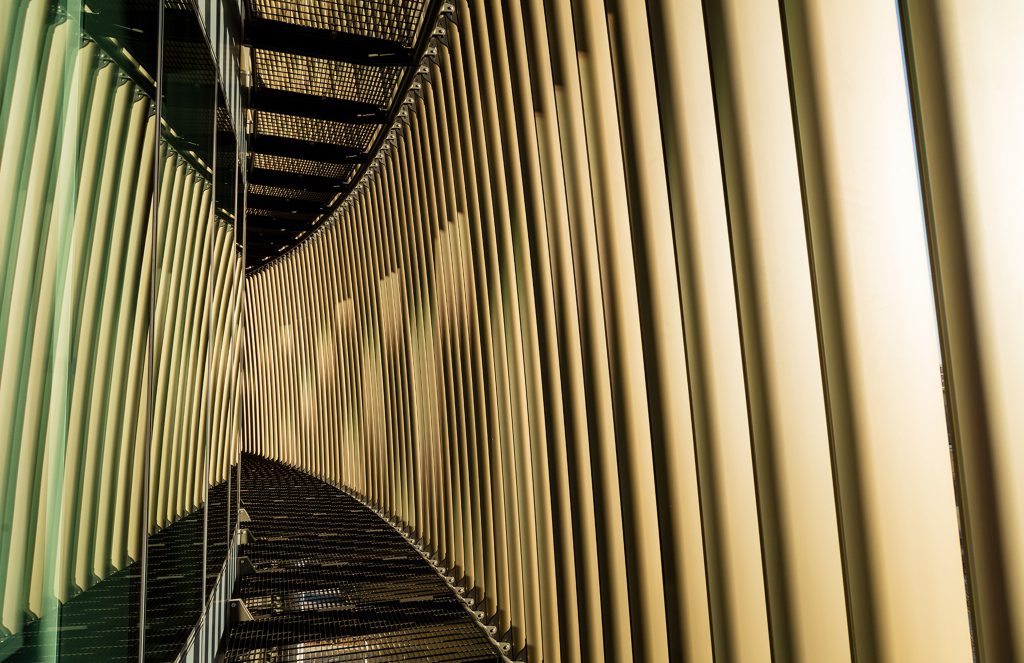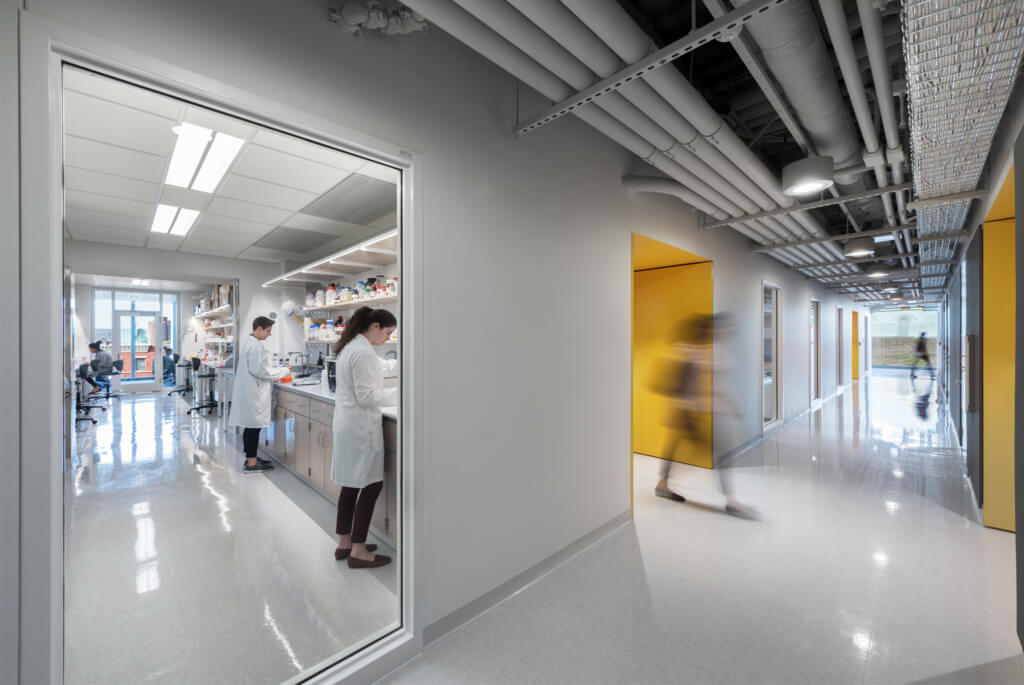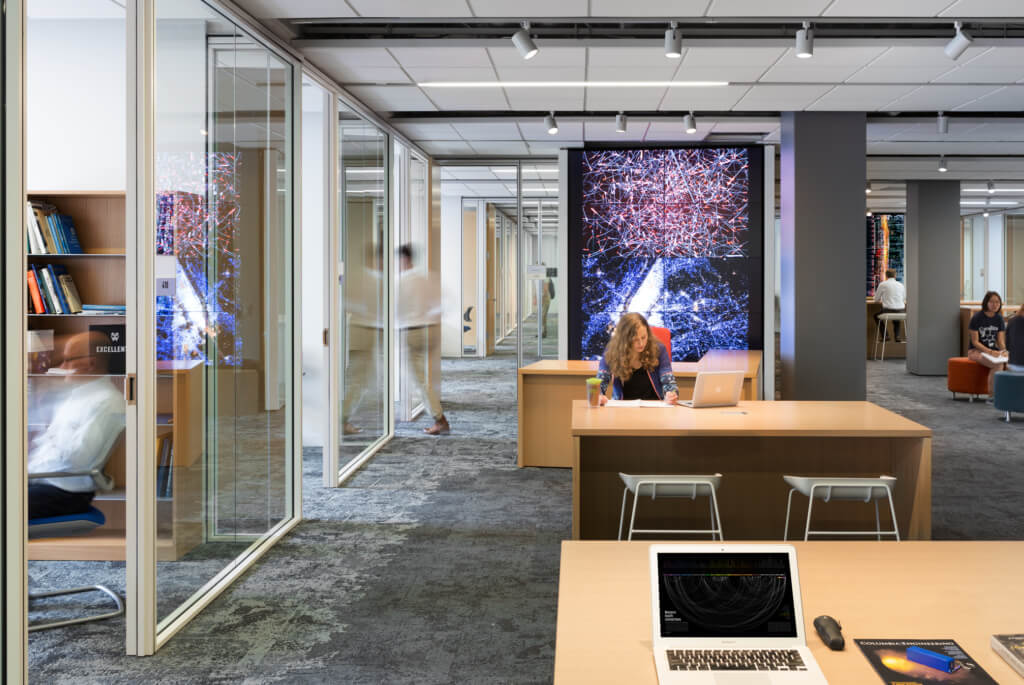Our practice specializes in technology-rich and energy-intensive buildings, which are typically some the greatest consumers of energy. It can be challenging to reduce energy use in these specialized projects, but because of their substantial environmental impact, the imperative is that much greater. Today, we look back on some of our 2018 sustainability accomplishments.
Four of our projects earned LEED® Gold Certification this year:

Interdisciplinary Science and Engineering Complex at Northeastern University
As a research building, this project represents one of the highest energy use typologies, which was an opportunity for our team to realize some of the greatest energy savings in a single project. The architectural form linked with high performance design, along with the implementation of the innovative energy recovery and conservation systems will allow the ISEC I to use 91 kBtu/sf equaling a 78% energy reduction compared to 2030 baseline.

reduction in potable water use for flush and flow fixtures

occupants that have lighting and daylight control
The ISEC also received at BSA Sustainable Design Award and 2018 People’s Choice Green Building Market Leader Award from the USGBC Green Building Showcase.

Rajen Kilachand Center for Integrated Life Sciences and Engineering at Boston University
This project is designed as a flexible, interdisciplinary research environment to accommodate current scientific research and offer easily adaptable space for yet-to-be-determined explorations. In a radical departure from conventional practice, its main mechanical spaces are located neither on the roof (where their unsightly bulk would be visible from the street) nor below grade (where they would be susceptible to flooding), but on levels two and three. Rather than separating energy-intensive core laboratories from less energy-intensive spaces by floor, each floor is zoned to accommodate low, medium and high intensity areas. The Kilachand Center achieved at 72% energy reduction compared to the 2030 baseline.

reduction in building water usage = 5,479 bathtubs

reduction in lighting energy usage

SEAS Data Science Institute Mudd Hall Renovation at Columbia University
This project earned LEED® Gold Certification with 63 points. We specified low VOC materials, FSC certified lumber and regional materials and reduced water consumption through efficient fixtures. As excepted in shared work spaces, individuals have control over their lighting and HVAC systems. Perhaps most unusual, we leveraged the monitor-intense activity of computation research and successfully cut the lighting levels to 10-20 FC providing work light only where needed.

of on-site generated construction waste diverted from landfill

of total building materials have been manufactured using recycled materials

One of the most energy-efficient laboratory buildings of its kind in the United States, this project is the product of a strategic infill addition. Rather than relocate or demolish one of the significant historic buildings, the design team arrived at a solution for a smaller new addition that leverages and strengthens the existing buildings through adaptive reuse, creating an integrated complex. The SEC employs ambitious low energy strategies across all building systems by establishing an aggressive total energy use intensity (EUI) target of 112 kBTU/SF/YR (excluding the vivarium) representing a 77% reduction compared to the 2030 baseline.

of building occupants have individual lighting controls

of the workstations have operable windows
In addition to the earning LEED Gold Certification, the SEC also received an I2SL 2018 Go Beyond Award in the Buildings Category. The Go Beyond Awards recognizes excellence in sustainability in laboratory and other high-technology facilities, such as hospitals, data centers and cleanrooms. The winning projects demonstrate unique aspects of energy and environmental sustainability which could include a new building, a major upgrade to an existing building or a campus project.
We are proud of our achievements this year, as we believe that great architecture and great building performance are inextricably linked. We look forward to continuing to break new ground in sustainable design and work towards achieving the 2030 commitment.

